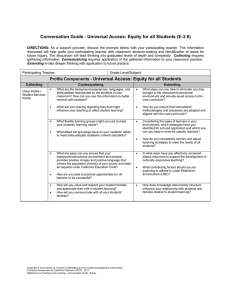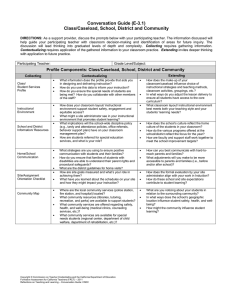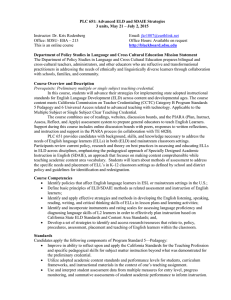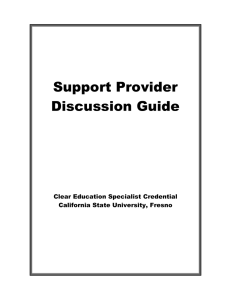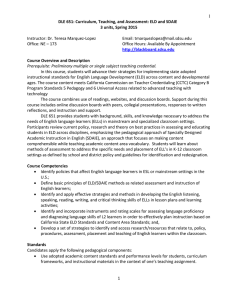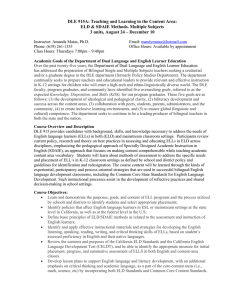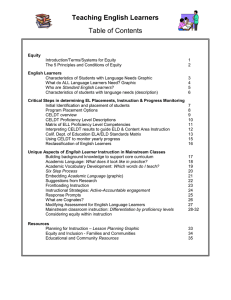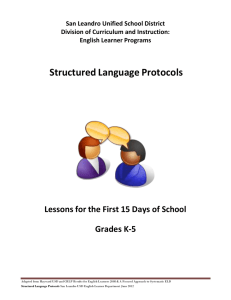Conversation Guide - Universal Access: Teaching English Learners (E-3.6a)
advertisement
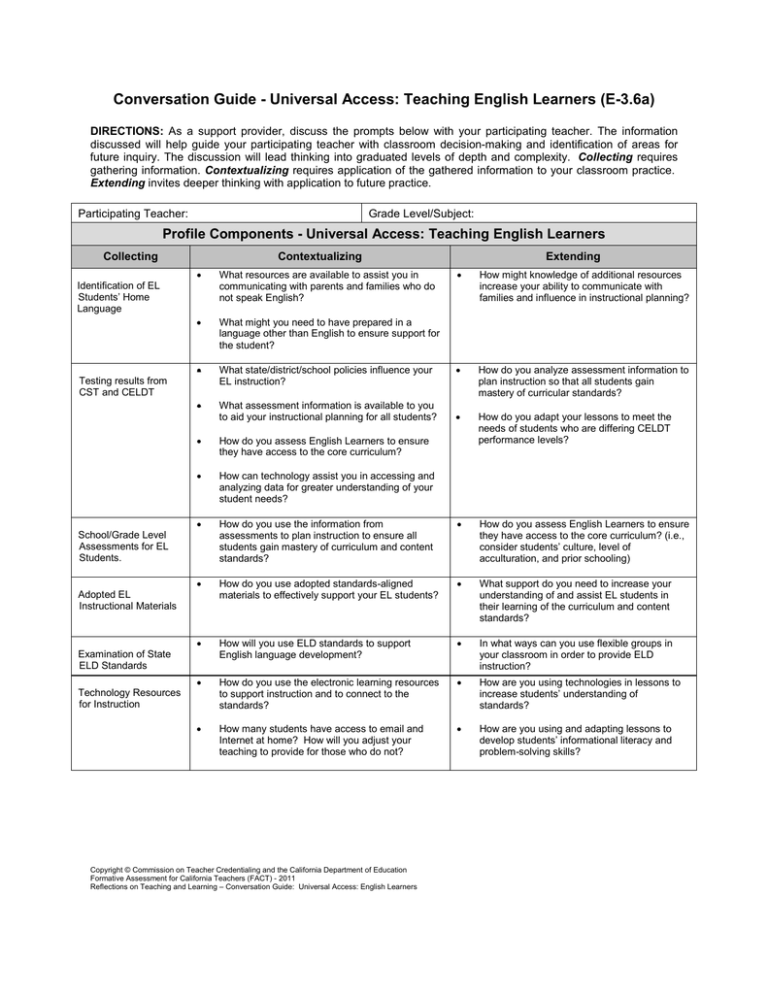
Conversation Guide - Universal Access: Teaching English Learners (E-3.6a) DIRECTIONS: As a support provider, discuss the prompts below with your participating teacher. The information discussed will help guide your participating teacher with classroom decision-making and identification of areas for future inquiry. The discussion will lead thinking into graduated levels of depth and complexity. Collecting requires gathering information. Contextualizing requires application of the gathered information to your classroom practice. Extending invites deeper thinking with application to future practice. Participating Teacher: Grade Level/Subject: Profile Components - Universal Access: Teaching English Learners Collecting Contextualizing • What resources are available to assist you in communicating with parents and families who do not speak English? • What might you need to have prepared in a language other than English to ensure support for the student? • What state/district/school policies influence your EL instruction? • What assessment information is available to you to aid your instructional planning for all students? Identification of EL Students’ Home Language Testing results from CST and CELDT Extending • How might knowledge of additional resources increase your ability to communicate with families and influence in instructional planning? • How do you analyze assessment information to plan instruction so that all students gain mastery of curricular standards? • How do you adapt your lessons to meet the needs of students who are differing CELDT performance levels? • How do you assess English Learners to ensure they have access to the core curriculum? • How can technology assist you in accessing and analyzing data for greater understanding of your student needs? • How do you use the information from assessments to plan instruction to ensure all students gain mastery of curriculum and content standards? • How do you assess English Learners to ensure they have access to the core curriculum? (i.e., consider students’ culture, level of acculturation, and prior schooling) • How do you use adopted standards-aligned materials to effectively support your EL students? • What support do you need to increase your understanding of and assist EL students in their learning of the curriculum and content standards? • How will you use ELD standards to support English language development? • In what ways can you use flexible groups in your classroom in order to provide ELD instruction? • How do you use the electronic learning resources to support instruction and to connect to the standards? • How are you using technologies in lessons to increase students’ understanding of standards? • How many students have access to email and Internet at home? How will you adjust your teaching to provide for those who do not? • How are you using and adapting lessons to develop students’ informational literacy and problem-solving skills? School/Grade Level Assessments for EL Students. Adopted EL Instructional Materials Examination of State ELD Standards Technology Resources for Instruction Copyright © Commission on Teacher Credentialing and the California Department of Education Formative Assessment for California Teachers (FACT) - 2011 Reflections on Teaching and Learning – Conversation Guide: Universal Access: English Learners

